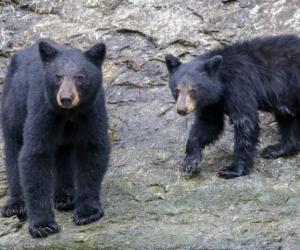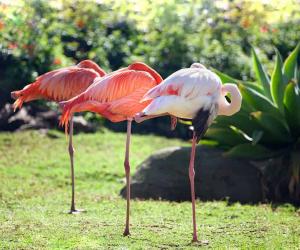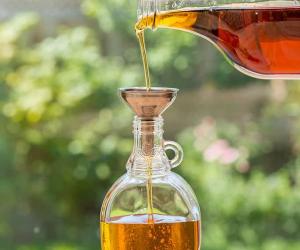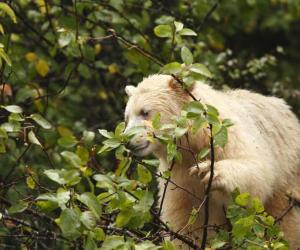What is a Paw Paw? Discover North America's Largest Fruit
Edible paw paws (Asimina triloba) grow on trees, and . However, they aren’t cultivated for mass distribution . Where do paw paws grow and what exactly are they? We’ll do a deep dive into the details surrounding this mysterious fruit now.
What is a Paw Paw?
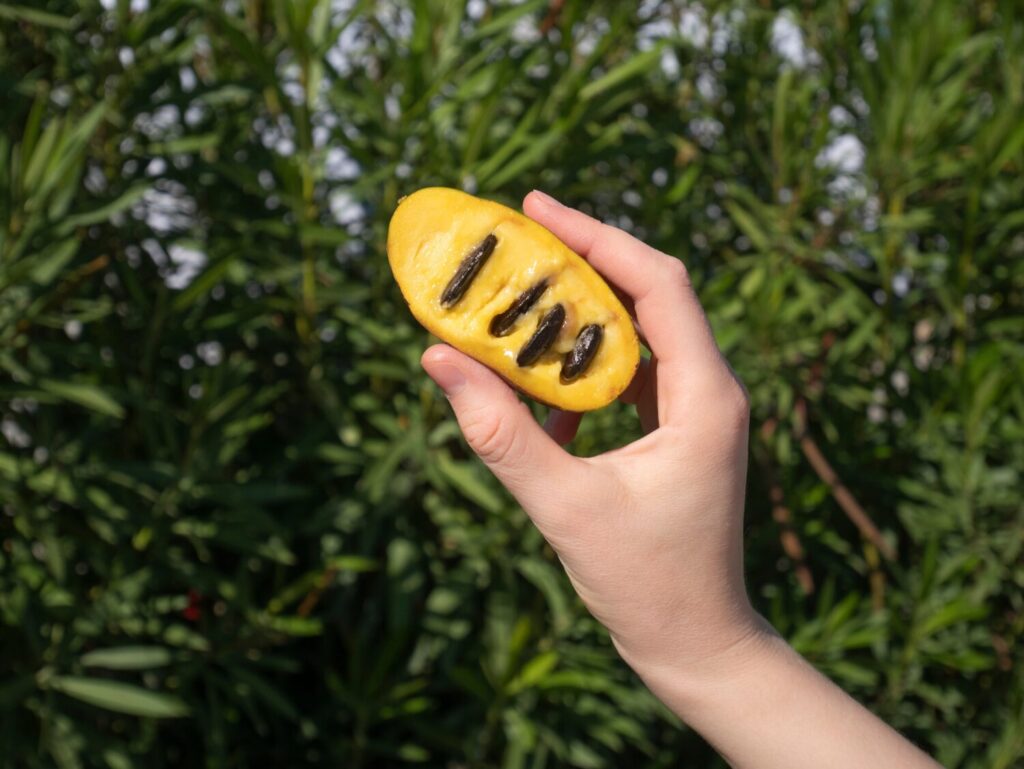
©Marco de Benedictis/Shutterstock.com
Pawpaws are a fruit native to the Eastern United States and Canada. They are the largest native edible fruit found in North America if you don’t count gourds. While gourds are technically fruit, most people treat them as vegetables when using them as food.
Paw Paw fruit comes from the deciduous paw paw tree, and their fruits are harvestable from the end of August through the . There are over 40 different cultivars though they are all similar.
Their tree is cone-shaped and grows between twelve and twenty-five feet tall. They prefer sunny spots, and they grow in stands in the wild.
Since they’re deciduous, they shed their leaves in the fall, and they go dormant for the winter. They flower in spring, and they have full green leaves during the summer. Their fruit is ready on the cusp between summer and fall.
Their flowers are maroon when in bloom, and they have an unpleasantly yeasty smell to them. That’s because their primary pollinators are certain beetles that are attracted to non-floral scents. Some farmers think other bugs like blow flies and dung flies are primary vectors, so they put carrion in their fields during blooms to attract these flies.
Their pulp is yellowish and they contain small almond-shaped seeds. When harvested, they are about 3 to 6 inches in length. Their fruits are technically berries though visually and aesthetically they don’t appear that way to the untrained consumer.
Where Do Paw Paws Grow?
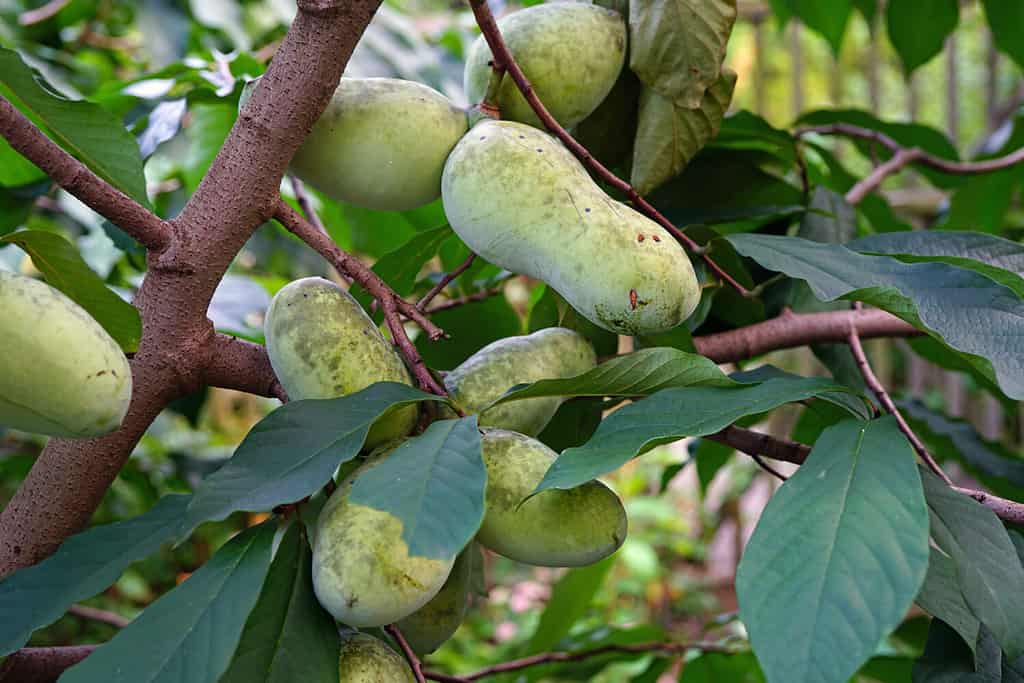
©EQRoy/Shutterstock.com
Pawpaw trees are found in the wild in Ontario’s southwestern range and continuously south through the east of Texas and northern Florida. They go as far west as .
They grow in temperate regions, and they thrive in areas with cold winters and hot summers. When ripe, their smell is unmistakable and can be detected when near a tree. This smell will also permeate any space where the fruit is kept, like cars, refrigerators, and small kitchens.
These North American fruits are of international interest. They are grown in other countries not in North America such as Belgium, South Korea, Nigeria, Japan, Italy, Portugal, China, Israel, and Romania.
What Do Pawpaws Taste Like?
Paw paws taste like a cross between and a mango with the consistency of a custard-like banana. Despite being a native of temperate climates, they have the taste and appearance of a tropical fruit. Their peels and seeds contain neurotoxins and need to be discarded.
When ripe, their flesh is so creamy that they cannot be diced. They make a good puree that doesn’t take much finessing to achieve. They brown quickly like a banana, so they should be eaten quickly or processed immediately. Their pulp bakes well into bread and cakes.
Since these fruits almost always become overripe less than a week after harvest, they are not a popular commercial commodity. Locally, they are often processed into jam, ice cream, and compotes. In the Midwest, paw paw at some small breweries.
Are Paw Paws the Same as Papayas?
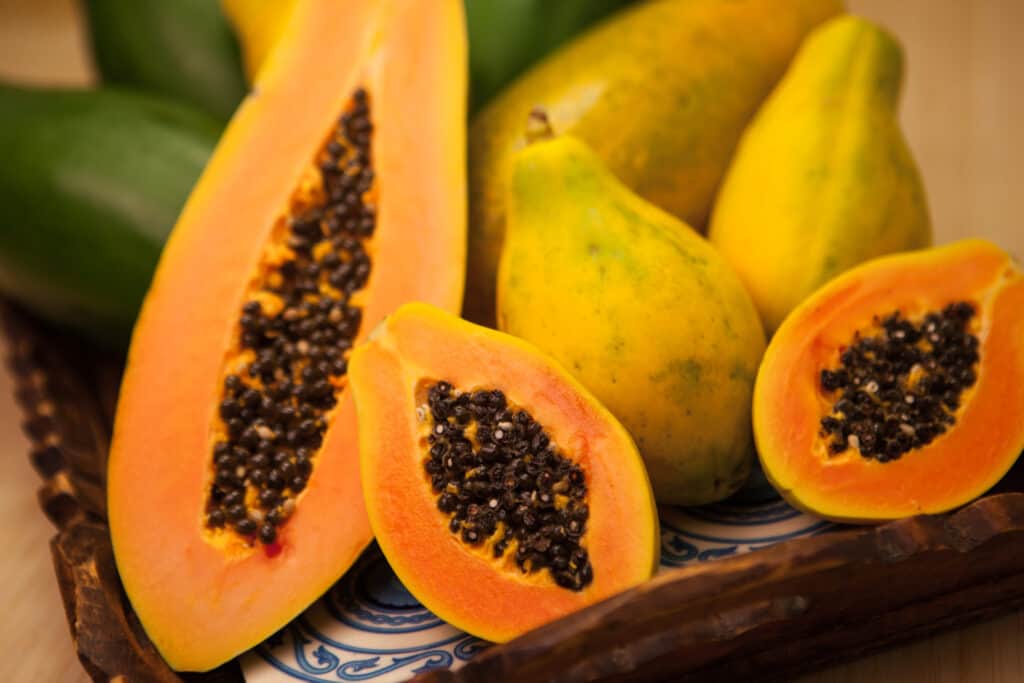
©iStock.com/PixoStudio
While classic (Carica papaya) are sometimes called pawpaws, they are not the same as the North American Asimina triloba. They share the same moniker because Spanish colonizers in the 1500s thought Asimina triloba looked like a papaya. In Australia, South , and New Zealand, the term pawpaw refers to papayas.
Pawpaws are more closely related to , , and custard apples. All of these fruits grow in subtropical or tropical places and cannot grow in areas with cold winters where paw paws are found.
The actual North American fruit doesn’t elicit a comparison with papayas and instead conjures visions of bananas or mangoes. This is seen in their other common names such as prairie banana, hillbilly mango, Indiana banana, poor man’s banana, banango, Indian banana, West Virginia banana, hipster banana, banana.
Scientific Applications of Pawpaws
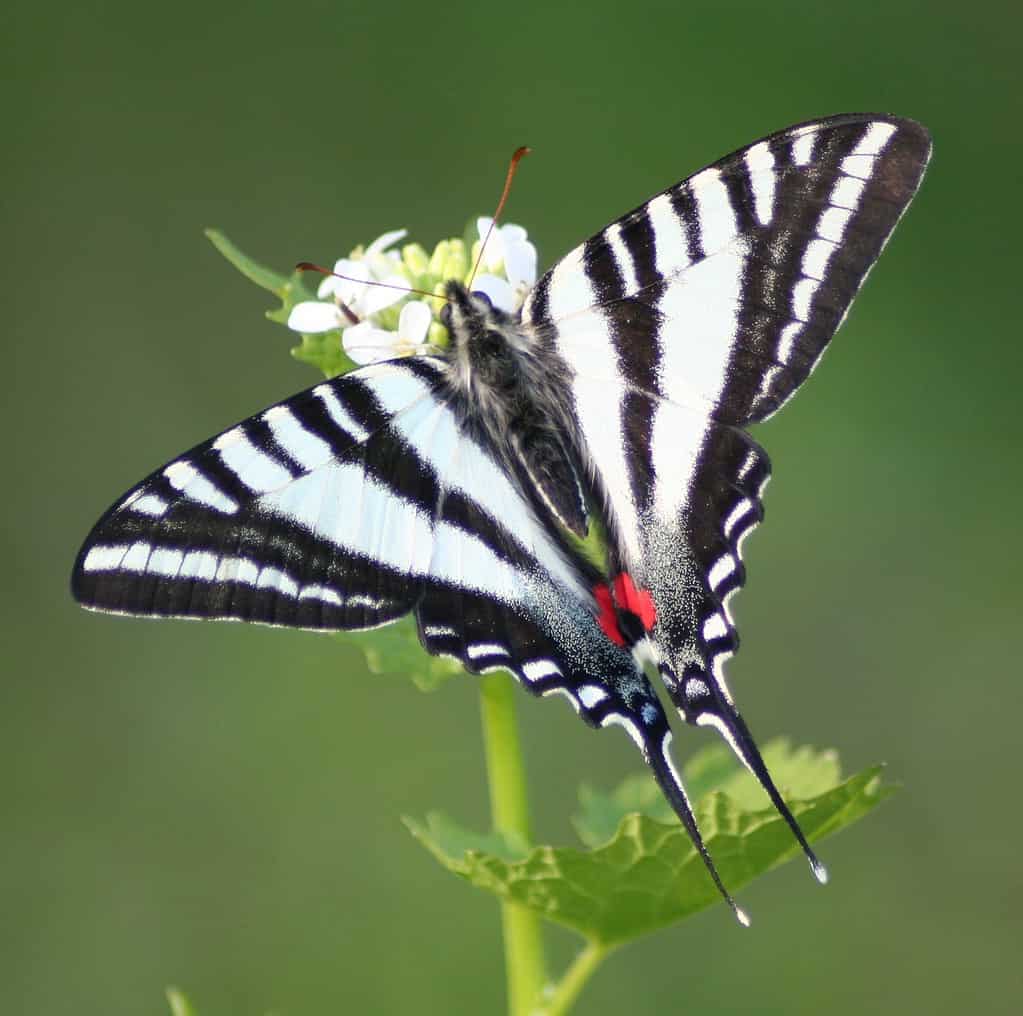
©Megan McCarty, CC BY 3.0 –
Scientists are interested in the potential applications of paw paw trees in human health and other endeavors. They are used in supplements because the fruits are high in potassium, copper, zinc, essential amino acids, iron, phosphorus, magnesium, riboflavin, vitamin C, niacin, and calcium. Their health benefits are on par with oranges, apples, and bananas.
Farmers and scientists know that animals are repelled by these trees. Their bark, leaves, and twigs are poisonous. As a result, the trees are not bothered by deer, rabbits, insects, and goats. which consumes leaves as a caterpillar so that it is toxic to other animals as an adult.
The development of trees has proven effective. The chemical that acts as a pesticide is of special interest because it kills a broad range of bugs, does so quickly, and is at low risk of .
Pawpaw Megafaunal Seed Dispersal
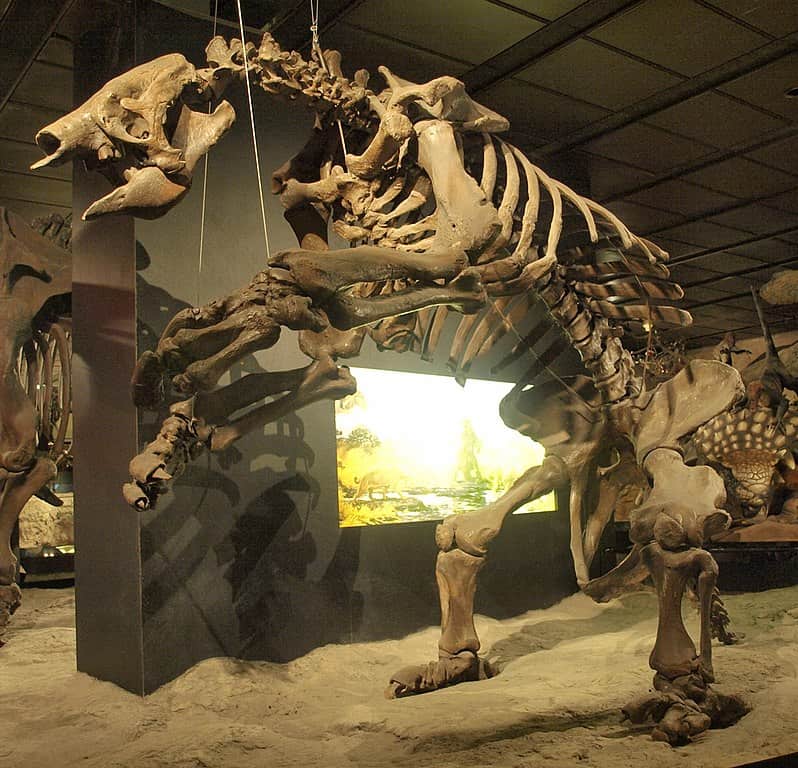
©Wikipedia Loves Art participant “Kamraman” / CC BY-SA 2.5 –
Scientists think that pawpaws are a fruit that evolved for seed dispersal like mastodons and giant ground sloths. These animals would have eaten the fruit and then defecated the seeds far away from where they were consumed. Today’s extant animals are too small to swallow the seeds effectively which has resulted in less of these trees.
Another signifier that these fruit evolved for megafauna is their coloration and smell. Large mammals of the past did not rely on color to find ripe fruit and instead relied on their smell. These fruits remain green throughout their growth cycle, and they have a very strong sweet smell to them before being peeled when they’re ripe.

